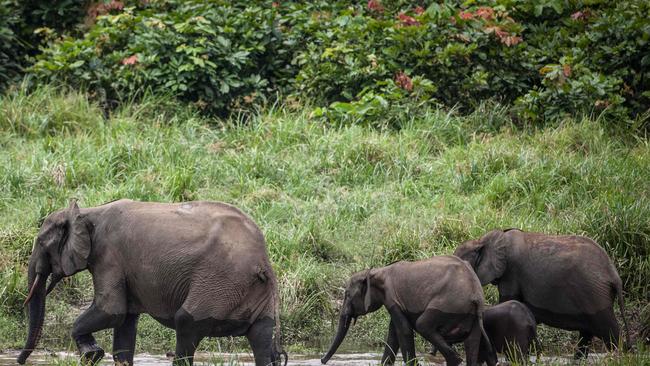Poaching leaves Africa’s forest elephants a step from extinction
Africa’s elephants have been recognised as two separate species by the global authority on wildlife protection.

Africa’s elephants have been recognised as two separate species by the global authority on wildlife protection, which has warned that one is close to extinction.
An updated “red list” of threatened species reported late on Thursday that the numbers of both forest and savanna elephants had been devastated by poaching and encroachment.
The International Union for Conservation of Nature said that forest elephants had been hit particularly hard. Their numbers fell by more than 86 per cent over three decades. They were now “critically endangered”. The next category is extinct.
The population of African savanna elephants had shrunk by at least 60 per cent over the past 50 years, with the species degraded from “vulnerable” to “endangered”.
About 1.5 million elephants roamed the continent 50 years ago but the most recent census in 2016 found that about 415,000 were still in the wild. The next count is expected to be carried out next year or in 2023.
“It is a wake-up call to the entire globe that we are going down a steep terrain when it comes to the viability of these elephants,” Benson Okita-Ouma, of Save the Elephants, said.
The separation of Africa’s elephant species settles a debate among specialists. It follows genetic research of the populations.
Charlie Mayhew, head of Tusk, the British conservation charity, said he welcomed the IUCN’s separate classification for forest elephants, “which have been overlooked for too long”.
Forest elephants are generally smaller, have oval ears, straighter tusks and a two-year gestation period. They are found in the tropical jungles of central Africa and pockets of west Africa. Savanna elephants, the largest land animal, live in larger herds and prefer open spaces, have bigger ears and carry their young for 18 to 22 months. Both species have suffered sharp declines since 2008, as ivory poaching has surged. The problem peaked in 2011 but continues to pose a threat.
A potentially more significant danger to elephant numbers is from the destruction of their habitats for farming and settlements.
Dr Okita-Ouma, who also assists the IUCN, said: “If we don’t plan our land-use properly, then as much as we stop poaching and illegal killing of these animals, there will still be other forms of indirect killings.”
The latest data also shows that targeted conservation efforts are having a positive effect on the numbers of animals in some areas. Forest elephant populations have steadied in Gabon and the Republic of the Congo, while savanna elephant numbers have been stable or increased in the Kavango-Zambezi transfrontier conservation area that stretches across five southern African countries.
Dr Okita-Ouma said the pandemic had seen conservation funds hit hard by the loss of tourism revenues. A decline in human activity, however, had also allowed elephants to “recolonise” areas from which they had previously been driven.
The Times


